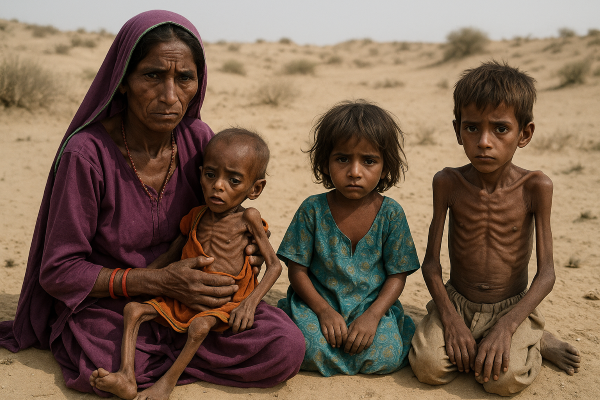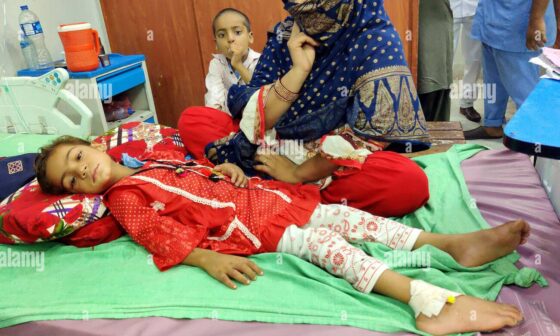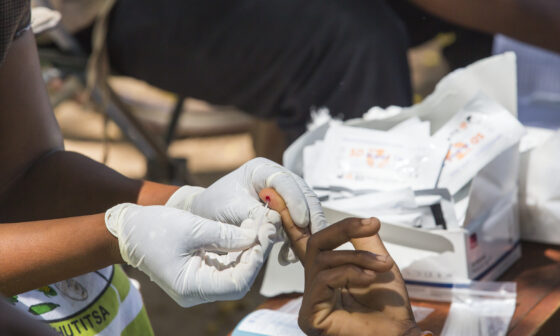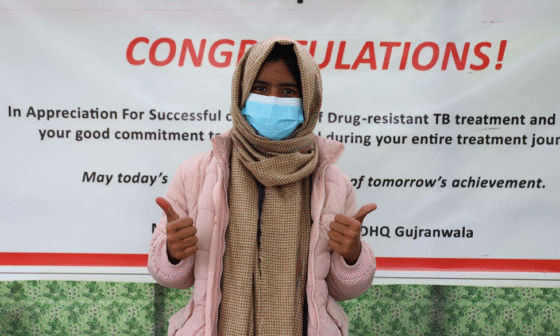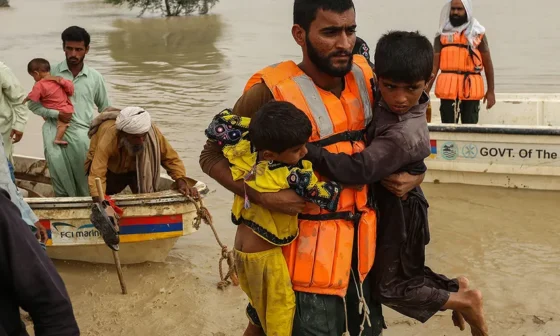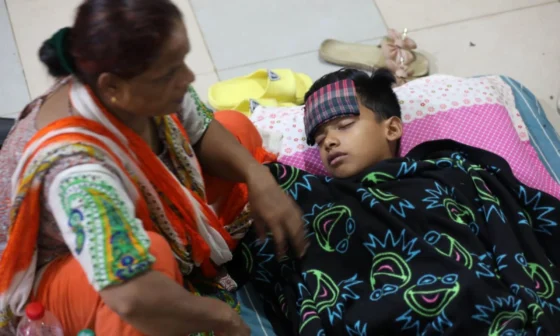Child malnutrition remains one of the gravest public health crises in Pakistan, particularly in the provinces of Sindh and Balochistan. These regions have some of the highest rates of stunting, wasting, and underweight children in the country. Malnutrition weakens the immune system, hinders brain development, and increases vulnerability to infections, leading to a cycle of poor health and poverty. The causes of malnutrition are deeply interconnected—poverty, food insecurity, lack of maternal education, inadequate healthcare, and cultural feeding practices all contribute to the crisis. In many remote villages, families struggle to provide even two meals a day, and when food is available, it lacks essential nutrients. Climate change and recurring droughts in Balochistan have further worsened food scarcity, leaving children chronically hungry. This silent emergency threatens the future of an entire generation if not addressed urgently.

Malnutrition threatening lives in Balochistan – Balochistan Point
A heart-wrenching story from rural Tharparkar in Sindh illustrates the human face of this crisis. Six-month-old Sana was brought to a small government health facility by her mother, who was alarmed by her baby’s constant weakness and swelling in her feet. The health worker diagnosed her with severe acute malnutrition, a condition where the body is so deprived of nutrients that it begins to shut down. Sana’s family, like many others, survived on a diet of plain bread and tea, unable to afford fruits, vegetables, or protein-rich foods. They believed the baby was simply “born weak” and did not realize she was critically ill. Fortunately, Sana was admitted to a nutrition stabilization center, where she received therapeutic feeding and medical care. Over several weeks, she slowly recovered, but her case reflects the thousands of children who never reach a clinic in time.

More than 1 in 9 children in flood-affected areas of Pakistan suffering from severe acute malnutrition – UNICEF
The underlying causes of child malnutrition in Sindh and Balochistan are multi-layered. Extreme poverty remains the root problem—families lack income to purchase diverse, nutritious food. In rural Balochistan, drought and poor agricultural productivity have reduced food availability, while in Sindh, recurring floods displace families and destroy crops. Maternal health and education also play a critical role; malnourished mothers often give birth to low-birth-weight babies, perpetuating the cycle of malnutrition. Lack of awareness about proper breastfeeding and complementary feeding practices further worsens the problem. Additionally, inadequate healthcare services mean that illnesses like diarrhea and respiratory infections, which are closely linked to malnutrition, often go untreated. Cultural beliefs sometimes discourage mothers from feeding children nutrient-rich foods, fearing digestive problems or cultural taboos.

Over 1 in 9 children in flood-affected areas of Pakistan suffering from severe acute malnutrition: UNICEF
Solving this crisis requires a combination of immediate relief measures and long-term development strategies. Community-based management of acute malnutrition (CMAM) programs have proven effective in identifying and treating malnourished children before it’s too late. Ready-to-use therapeutic foods (RUTFs) can save severely malnourished children like Sana quickly and cost-effectively. Nutrition education campaigns targeting mothers are vital to improve feeding practices, while promoting exclusive breastfeeding for the first six months can significantly reduce stunting. School feeding programs can help ensure children receive at least one nutritious meal daily, improving both health and education outcomes. In the long term, improving agricultural productivity, strengthening rural livelihoods, and ensuring food security are key to breaking the cycle of hunger and malnutrition.

Over one crore people may be affected by severe food insecurity in Pakistan
The government and non-governmental organizations must work hand in hand to tackle child malnutrition in Sindh and Balochistan. Expanding nutrition stabilization centers, training Lady Health Workers in growth monitoring, and integrating nutrition services into primary healthcare are critical steps. Social protection programs like the Benazir Income Support Program (BISP) can provide conditional cash transfers to encourage better maternal and child health practices. Clean water and sanitation projects must also be prioritized, as poor hygiene significantly contributes to diarrhea-related malnutrition. International donors and UN agencies have supported several initiatives in these provinces, but sustainable progress depends on local ownership and community engagement. Empowering mothers with knowledge, resources, and support can create lasting change at the grassroots level.

Supporting Urgent Nutrition Needs for 1M Pregnant Women in Pakistan Floods | JUNAID
Child malnutrition is not just a health issue—it is a moral and economic crisis that affects the nation’s future. Sana’s story shows that with timely intervention, lives can be saved and futures restored. No child should suffer from hunger in a country capable of producing enough food for its population. By addressing poverty, improving maternal health, strengthening healthcare, and ensuring food security, Pakistan can build a future where every child in Sindh, Balochistan, and beyond has the right to grow, learn, and thrive. Ending malnutrition is not only a humanitarian obligation but also an investment in the country’s social and economic development
References
Dawn News (2023). “Why Child Malnutrition Remains a Silent Emergency in Sindh.”
World Food Programme (2023). “Child Malnutrition in South Asia: Current Trends and Challenges.”
National Nutrition Survey Pakistan (2022). “Stunting and Wasting in Sindh and Balochistan.”
UNICEF Pakistan (2023). “The State of Child Malnutrition in Rural Communities.”
The Lancet Global Health (2022). “Community-Based Management of Acute Malnutrition.”
Pakistan Institute of Development Economics (2023). “Food Insecurity and Poverty in Balochistan.”
Journal of Maternal and Child Nutrition (2023). “Breastfeeding Practices and Nutritional Outcomes in Pakistan.”
Save the Children Pakistan (2022). “Tackling Malnutrition in Tharparkar: Lessons Learned.”
